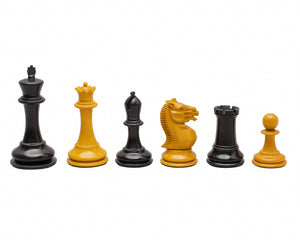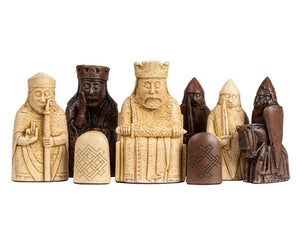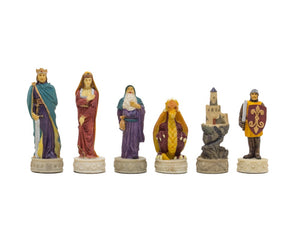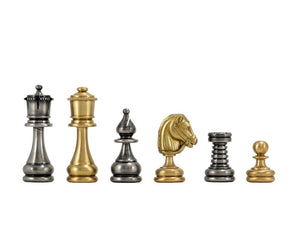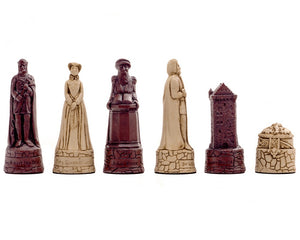Chess Pieces
Our Chess Pieces category showcases an exquisite selection of chess pieces that cater to a broad spectrum of preferences and styles. We pride ourselves on offering pieces that are not only functional for play but also serve as intricate works of art. Each piece in our collection is handcrafted by the world's finest artisans from Europe and India, ensuring the highest quality and attention to detail.
Standard Staunton Chess Pieces
The Standard Staunton chess pieces represent our entry-level offering, crafted with quality materials to provide durability and a classic look. These pieces adhere to the traditional Staunton design, recognized worldwide for its balanced proportions and playability. Despite being our most accessible tier, these pieces do not compromise on quality, making them a perfect choice for players of all levels.
Luxury Staunton Chess Pieces
At the pinnacle of our Staunton range are the Luxury Staunton chess pieces. These are our finest pieces, crafted from premium materials such as ebony and other high-grade woods. The Luxury Staunton pieces are designed for those who demand the best in terms of both aesthetics and material quality. These sets stand out not just for their superior craftsmanship but also for the sheer elegance they bring to any game or collection.
Vintage Staunton Chess Pieces
For enthusiasts of history and craftsmanship, our Vintage Staunton chess pieces offer precise reproductions of classic designs from the golden age of chess. These pieces are meticulously crafted to replicate the historical Staunton sets, offering a tangible connection to the rich history of chess. The Vintage Staunton range is ideal for collectors and players who appreciate the nostalgia and timeless beauty of these designs.
Isle of Lewis Chess Pieces
Our Isle of Lewis chess pieces are made from crushed stone resin, faithfully replicating the famous historical chess set discovered on the Isle of Lewis. These pieces are handcrafted to capture the intricate details and character of the originals, offering players and collectors a piece of chess history. The Isle of Lewis sets are known for their unique and captivating designs, making them a standout addition to any collection.
Metal Chess Pieces
For those who prefer the weight and lustre of metal, our collection includes chess pieces made from brass, nickel, and even a select few in gold and silver plating. These metal chess pieces combine durability with a distinctive aesthetic, offering an alternative to traditional wooden sets. The heft and shine of these pieces add a level of sophistication and tactile pleasure to the game.
Themed Chess Pieces
Our themed chess pieces span a wide range of historical, cultural, and fictional motifs, allowing players to immerse themselves in different worlds through the game of chess. From battles of ancient civilizations to the intrigues of fictional realms, these sets are designed to captivate the imagination while providing an engaging chess experience. Each themed set is a testament to the creativity and artistry of its creators, offering unique narratives and designs.
In conclusion, our Chess Pieces category is a treasure trove for chess enthusiasts, combining the heritage of traditional designs with the creativity of themed sets. Whether you are looking to start your journey in chess, add to your collection, or find a unique gift, our range of chess pieces promises something special for everyone.



